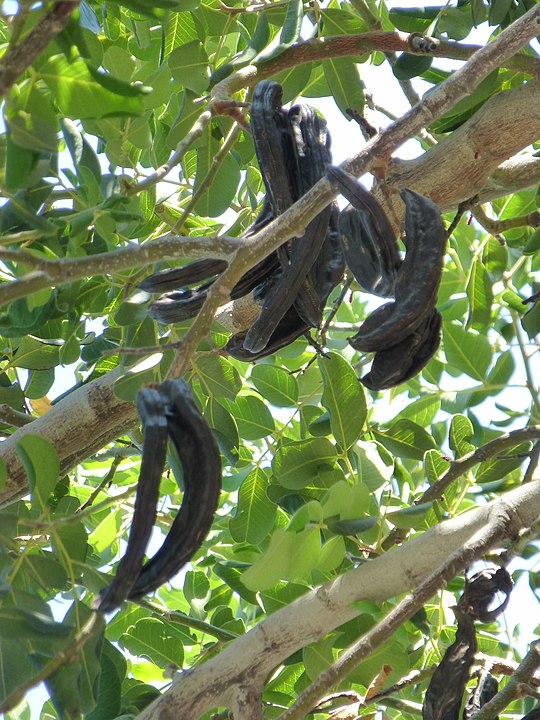The Unexpected Legacy of the Carob Seed
As those of you who also read my newsletter already know, My Own True Love and I recently got back from a ten-day tour in Sicily. The tour focused on food, not on history, but you can’t keep history nerds from noticing history, especially in a cultural melting pot like Sicily, which at various times was controlled by the Phoenicians, the Greeks, the Romans, Goths and Vandals, the Byzantines, Muslims from North Africa, Normans, and Spain.
Our first day in Sicily included a walking tour of Palermo, on which we were introduced to the carob tree, and more importantly from my perspective, the carob pod.
Most of us know carob as an unsatisfactory substitute for chocolate—made by drying, roasting and grinding the pulp found inside the pods— that was foisted on us in the name of health. In addition, the seeds are the source of a widely used thickening agent that is used in commercially prepared foods, including ice cream.
That is not what caught my attention, however. In the days before standardized weights and measures, carob seeds were used by traders around the Mediterranean as a standard for weighing small valuable items, particularly gemstones. The story is that the seeds are relatively consistent in size: 0.2 grams or 1/150th of an ounce.* Certainly they were readily available throughout the Mediterranean, where the tree is commonly found. The average weight of the carob seed, once known as carats, from the tree known as Ceratonia Selequia,** became the standard measure for gemstones: the carat.**
Who knew?
*Scientific studies demonstrate that this isn’t necessarily true. https://www.ncbi.nlm.nih.gov/pmc/articles/PMC1686184/
**Pronounce Ceratonia with a hard c, as is proper in Latin, and the relationship will be clear.





